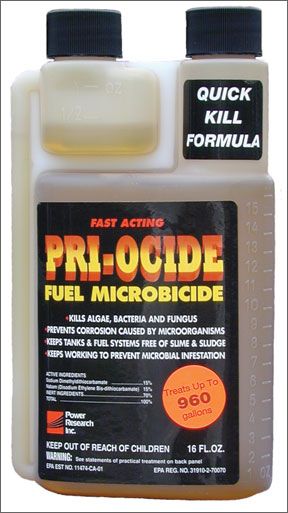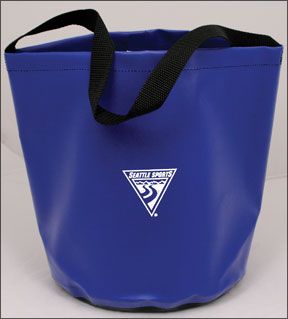Good ol Morgan I want to commend Steve Cocklin on his Morgan 30 restoration project (August 2009). I too own a classic Morgan, a 1970 Morgan 33 named Captiva, with a similar cabin plan as Cocklins Wavedancer. I have owned my 33 since 1975 and have undertaken a number of improvements, many of which have been featured in Sail and BoatUS DIY magazines. Those improvements include: the folding removable cockpit dining table I built (see inset photo above), which has made outdoor dining a pleasure and was featured in Sail; wiring the boat with 110-volt AC shore power with a circuit breaker; replacing the ice box with a 110-volt AC fridge; installing a LectraSan waste treatment system; Photos courtesy of Gary Gerber 288 replacing the original double-walled exhaust pipe, which had an uphill incline, with a Vetus water lift muffler (featured in DIY in 2008); and installing a 5000 BTU 110-volt AC air-conditioner in the forepeak (a permanent installation during the summer). Gary Gerber, More on The Morgan As a prior owner of a Charley Morgan yacht, I greatly appreciated your article on the Morgan 30. I could relate to the difficulties of that boat, having had to replace a broken centerboard pennant, replace the Palmer M60 with a Yanmar diesel, install a second battery, and live with fairly primitive belowdecks amenities. Yet for all those issues, I loved the boat. The centerboard could be used to move the lateral resistance forward or back, so it was possible to get the boat to balance perfectly and track with barely a finger on the tiller. Ive sailed the Chesapeake Bay for 39 years and have owned a Morgan, Bristol, and Pearson. Of the three, the Morgan was the most fun to sail. Ken Thorn, Additive vs. Biocide While I have never used any of the biocides that you evaluated in the July 2009 issue, I have been using PRI-D from Power Research Inc. of Houston for eight years. I have sailed throughout the Mediterranean, Caribbean, Bahamas, Turks & Caicos, and the U.S. East and Gulf coasts using PRI-D, and I have never had a fuel-related problem. Would you evaluate it in a future issue? If you cannot test the PRI-D in the near 288 term, could you tell me which of the four biocide types of active ingredients (dioxoaborinanes, dithiocarbamates, morpholine and compounds or thiocyanates) are used in PRI-D, which of the products you tested would be most like PRI-D, and whether I should switch to one of the other products? Which product between ValvTect or Star Brite Biodiesel do you recommend, and would you recommend PRI-D over or under any of these products? Jerry Templer, PRI-D is not a biocide; it is a fuel treatment. Diesel additives and biocides perform separate functions, and we do not advise that boaters use one over the other. We did not test fuel additives for this article, but many are known to help keep fuel systems clean and fuel stable. Biocides are intended only to treat or prevent fuel infections. The two additive types can and should be used in combination, just as a person might take both blood pressure medication and an antibiotic. PRI-Ocide is a biocide. It is an Alco Chemical product containing dithiocarbamates. (See www.pesticide More on Biocides Your July article on treatments for contaminated diesel left out what I think is some important data: the shelf lives of unsealed containers of the tested products. At the rate that I use fuel, maybe 40 gallons per year, added 10 gallons at a time, I 154 may have to measure out as little as 1/8 ounce of additive. A container of additive will then last me on the order of 20 years. I don’t think that biocides-or many other products-will last that long in opened containers. Larry E. Oppenheimer, According to Star brite, maker of the 
Captiva, Morgan 33
Selby Bay, Md.
Carrboro, N.C.
Second Encounter, Pearson 33
Solomons, Md.
The Saint, Catana 582 catamaran
Coral Gables, Fla.
info.org/Detail_Product.jsp?REG_NR=03191000002&DIST_NR=
049918 for more information.) We did not test PRI-Ocide. Rather than duplicating testing, we tested one of each active biocide. PRI-Ocide is under the same registration as ValvTects Bioguard and FPPF Killem, and should be an identical product. Our tests on ValvTect Bioguard confirmed that it is an effective formulation.
Toybox, Catalina 28
Sarasota, Fla.
Infrared and Sunglasses
Mountaineers and sailors have common problems: intense light, highly reflective surfaces, out in the sun all day. Your transmission analysis of sunglasses (July 2009) stopped at the upper end of the visible spectrum. Mountaineering glasses have low transmission in the visible but are also blocked for the near infrared and infrared. The logic is that when wearing dark glasses, your pupils are often wide open. If infrared can pass, then it can damage the eye. Could you test the infrared

140
transmission of your sunglass panel?
Paul Young,
Clotho
Kingston, Ontario, Canada
We did not test the lenses for their protection against infrared (IR) light because it is not perceived as being an issue in the natural environment, especially at sea level. In normal environmental doses, it is not harmful to the eye like it is in high-intensity or extremely concentrated doses-like that experienced by glass-blowers and welders. Sunglasses makers we queried said they do not make glasses that block IR for the same reason. In fact, the spectrophotometer we used for testing, which will measure to 1,100 nanometers, is not even capable of measuring to the range necessary to gauge IR (1,300-1,500 nanometers).
Icicle Hitch
Can you give a more detailed set of pictures or drawings for the icicle hitch that was named the best knot for gripping a tensioned line in the August 2009 issue? Something on the order of Animated Knots by Grog (www.animatedknots.com) would be greatly appreciated.
Mark Bertaccchi,
Via e-mail
We were not able to find an animated how-to for tying the icicle hitch; however, Alan Groggins of Animated Knots, has said he will consider adding that one to his website in the future. For now, we suggest checking out the sites animation for the Klemheist knot, which is very similar to the icicle hitch. Go to

288
www.animatedknots.com
and click on the “Climbing” tab, then select Klemheist. For non-animated, yet specific how-to pictures for the icicle hitch, visit the website of Practical Sailor contributors Evans Starzinger and Beth Leonard, http://bethandevans.com/pdf/Iciclehitch.pdf.
Climbers Knots
Two of my long-time favorite knots were omitted from your August 2009 article. (They are simple knots I can tie in the dark.)
Prusik Hitch: A rock climbers standard, it is tied with a loop instead of a rope end and is commonly used to either climb or ascend a rope. Many climbers, including me, have staked their lives on this knot, and its reliability is well proven on dry, wet, and icy lines. A description can be found at www.animatedknots.com, in the climbing section.
Another modified rolling hitch: After tying the two descending turns, tie the cross-over turns in reverse, like a Prusik Hitch but with only one reverse turn. The gripping is increased many times with no increase in complexity.
Really, these are both simple variations on the ring bend, but with greatly increased grip and reliability.
Drew Frye,
Shoal Survivor, PDQ Altair 32
Deale, Md.
Bucket Test
Your review of the Seattle Sports camp bucket (Chandlery, August 2009) covered its use in static mode, sitting on deck or a counter etc., but what about its

288
performance in what may be the main use of a bucket onboard: tossing it over the side with line attached to scoop up water to wash the deck, at anchor and underway?
Bob Berta,
Via e-mail
Testers did evaluate the Seattle Sports Camp Buckets
(www.seattlesportsco.com) performance as a hauler and bailer. We found that it worked quite well for hauling water aboard, at the dock or underway. Once a small amount of water gets in the bucket, the weight opens the mouth wider and sinks the bucket below the surface to scoop more water. However, it didnt do as well as a bailer.Yacht Design
Your February 2009 article “A Question of Balance” raised questions about unhealthy trends in boat design. I think there are other unhealthy trends you might comment on. I don’t understand open transoms on cruiser-racers, for example. It would seem to me that the potential for having gear, small pets, or grandchildren fall overboard outweighs the need for a coastal cruiser to shed water out the back of the cockpit.
Jack Dexter,
Serenity, Endeavour 33
Via e-mail


































